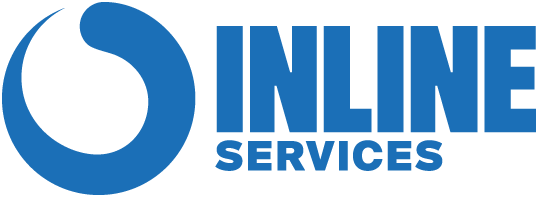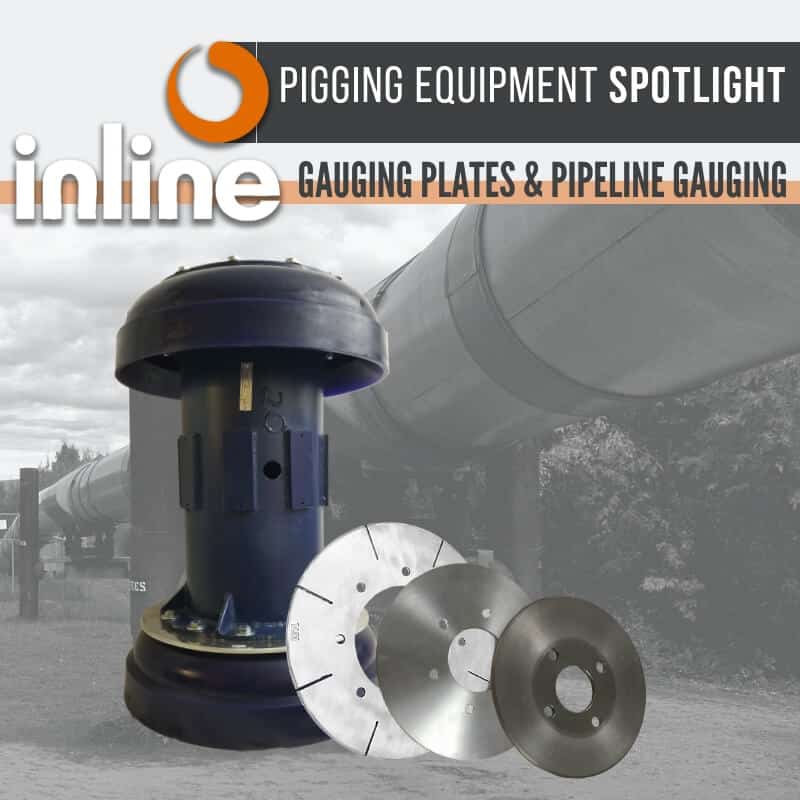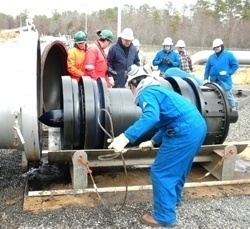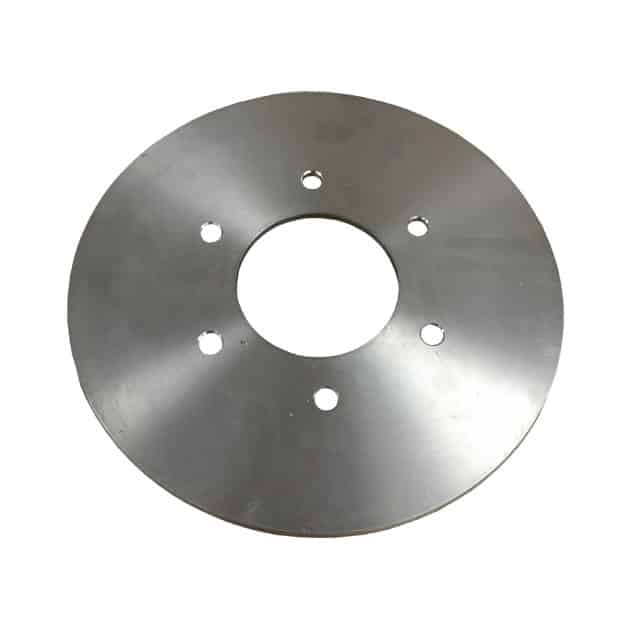 At first glance, a Gauge Plate may not look like anything special, but it plays a key role in both progressive and new construction pipeline pigging, called Pipeline Gauging.
At first glance, a Gauge Plate may not look like anything special, but it plays a key role in both progressive and new construction pipeline pigging, called Pipeline Gauging.
Pipeline Gauging
Pipeline gauging is the process of locating and identifying internal defects such as dents, debris or other internal restrictions that affect the I.D. of the pipeline. Why is this important? The pipeline is designed to deliver a certain throughput based on a minimum diameter. It is in the best interest of the construction company to ensure the minimum diameter isn’t lost before finalizing the project. Pipeline pigs are used to accomplish this task, but not just any pig, the pig must be dressed with a gauge plate.
In the early days of pigging, gauge plates were made from steel. Today’s gauge plates are made from aluminum to avoid causing damage to the pipe walls. The plate is sized proportionately to the minimum internal diameter of the pipeline, then added the appropriate style of pig, such as Steel Mandrel or MULTI-CAST™ depending on the application. The addition of the gauge plate then classifies the pig as a Gauging Pig. Guide discs, seal discs and cups can be added to a gauging pig, as well as transmitters and magnets for pig tracking purposes.
How Does a Gauging Pig Work?
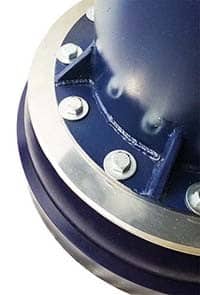 While traversing the pipeline, if the Gauging Pig passes through any obstructions or restrictions, the plate will show wear. Examining the wear on the plate and tracking the pigs location allows for isolating problem areas in the line. Once problem areas are identified in the line, the appropriate next steps can be taken to correct the issue, such as implementing a more aggressive pigging program to remove the debris, or making pipeline repairs to correct line damage causing the restriction.
While traversing the pipeline, if the Gauging Pig passes through any obstructions or restrictions, the plate will show wear. Examining the wear on the plate and tracking the pigs location allows for isolating problem areas in the line. Once problem areas are identified in the line, the appropriate next steps can be taken to correct the issue, such as implementing a more aggressive pigging program to remove the debris, or making pipeline repairs to correct line damage causing the restriction.
Who Supplies Gauge Plates?
Inline Services manufactures aluminum gauge plates on-site, in all sizes and thicknesses, to meet specifications for any requirement. In most cases, we can fulfill a gauge plate order within 24hrs.
There are many considerations when selecting the most effective pig design for a pipeline gauging project. Our pigging experts can help you determine the best equipment to get the job done quickly and efficiently. Live chat, email or call us today at 888.973.0079!
